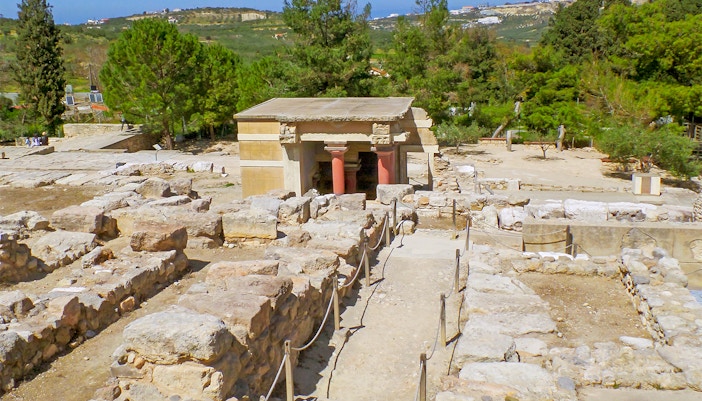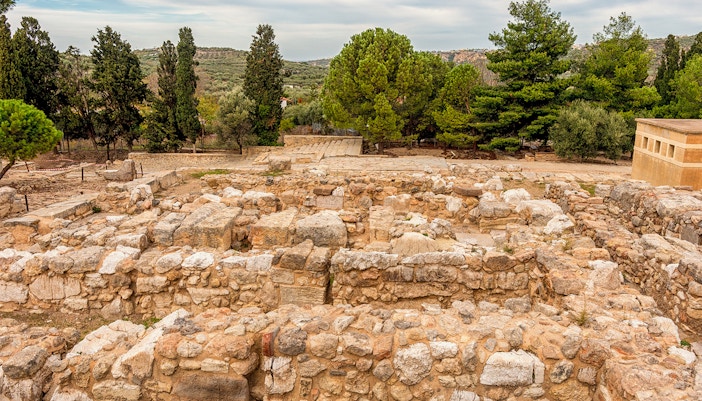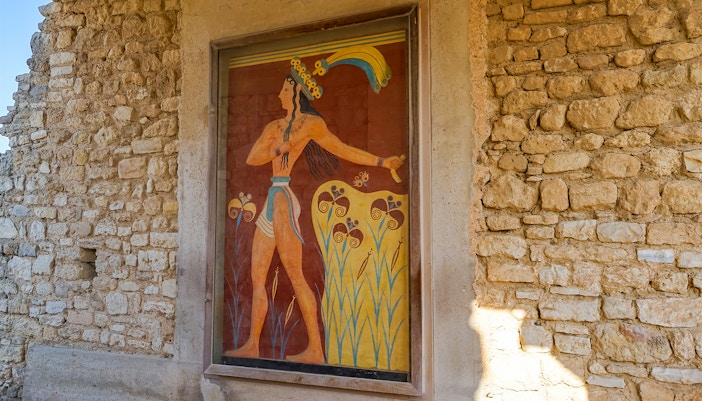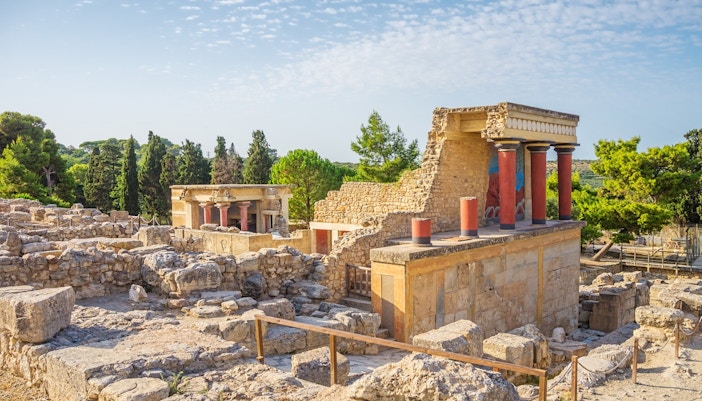- Historical significance: The heart of the palace where public gatherings and religious ceremonies took place, including the famous bull-leaping rituals.
- Design: A vast, open space, designed to accommodate crowds, with surrounding structures providing access to different parts of the palace.
- Archaeological finds: Vibrant frescoes on the walls and remains of religious artifacts.
Residential and administrative wing

The Central Court

The Throne Room
- Historical significance: Believed to have served as the seat of the king or high priest, symbolizing Minoan authority and religious power.
- Design: A large, stone seat, resumed to be the oldest throne in Europe, flanked by benches and frescoes depicting griffins, reinforcing its ceremonial nature.
- Archaeological finds: Libation vessels and religious symbols like double axes.

The Royal Apartments
- Historical significance: Once home to the royal family, equipped with a flushing toilet and advanced drainage systems to reflect their engineering prowess.
- Design: A complex with the King’s apartment and the Queen’s Megaron adorned with the ‘Dolphin Fresco’, highlighting the Minoans’ love for marine life.
- Archaeological finds: Decorative frescoes, pottery, and personal items, reflecting the luxurious lifestyle and tastes of the palace’s elite.

The Grand Staircase
- Historical significance: A staircase, linking different levels of the palace, showcasing the Minoans' architectural mastery and providing access to important areas such as the Royal Apartments and ceremonial spaces.
- Design: A multi-story staircase with wide steps and stone barriers, designed to accommodate large processions or gatherings.
- Archaeological finds: Decorative wall frescoes and inscriptions to showcase their grandeur.
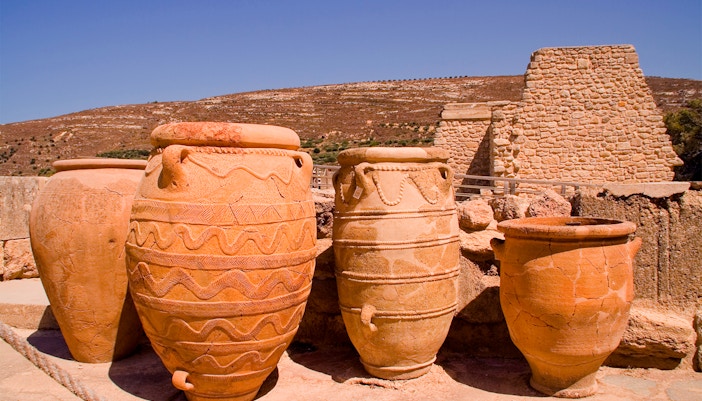
The Storage Rooms
- Historical significance: Also known as the magazines, these rooms were vital to the palace’s economic operations, serving as repositories for grain, oil, and wine.
- Design: Rows of large pithoi (storage jars) to showcase the Knossos Palace’s ability to store vast quantities of supplies, essential for trade and sustenance.
- Archaeological finds: Storage jars with seals and tablets with Linear A scripts, providing valuable insights into Minoan record-keeping and trade practices.


